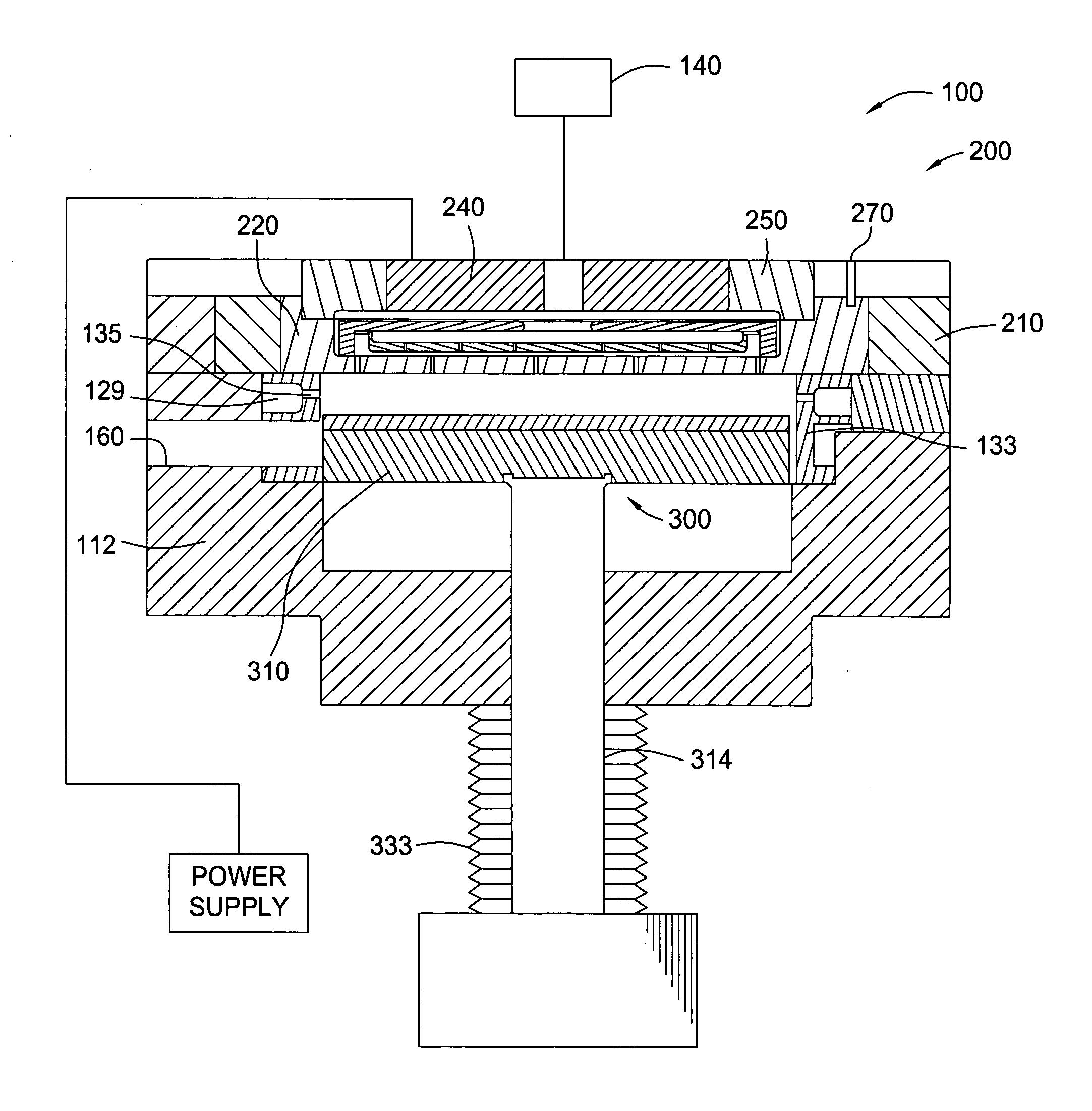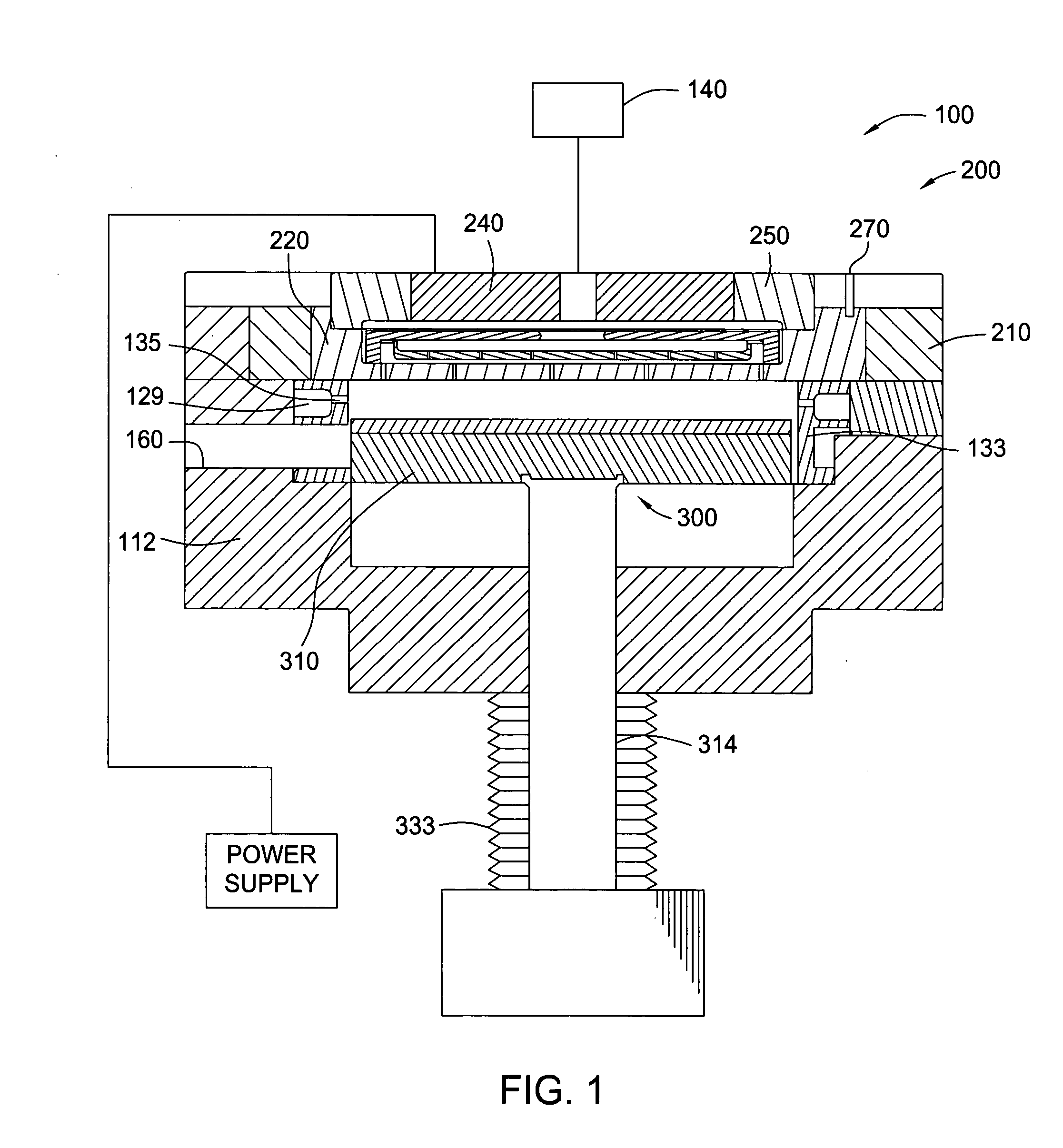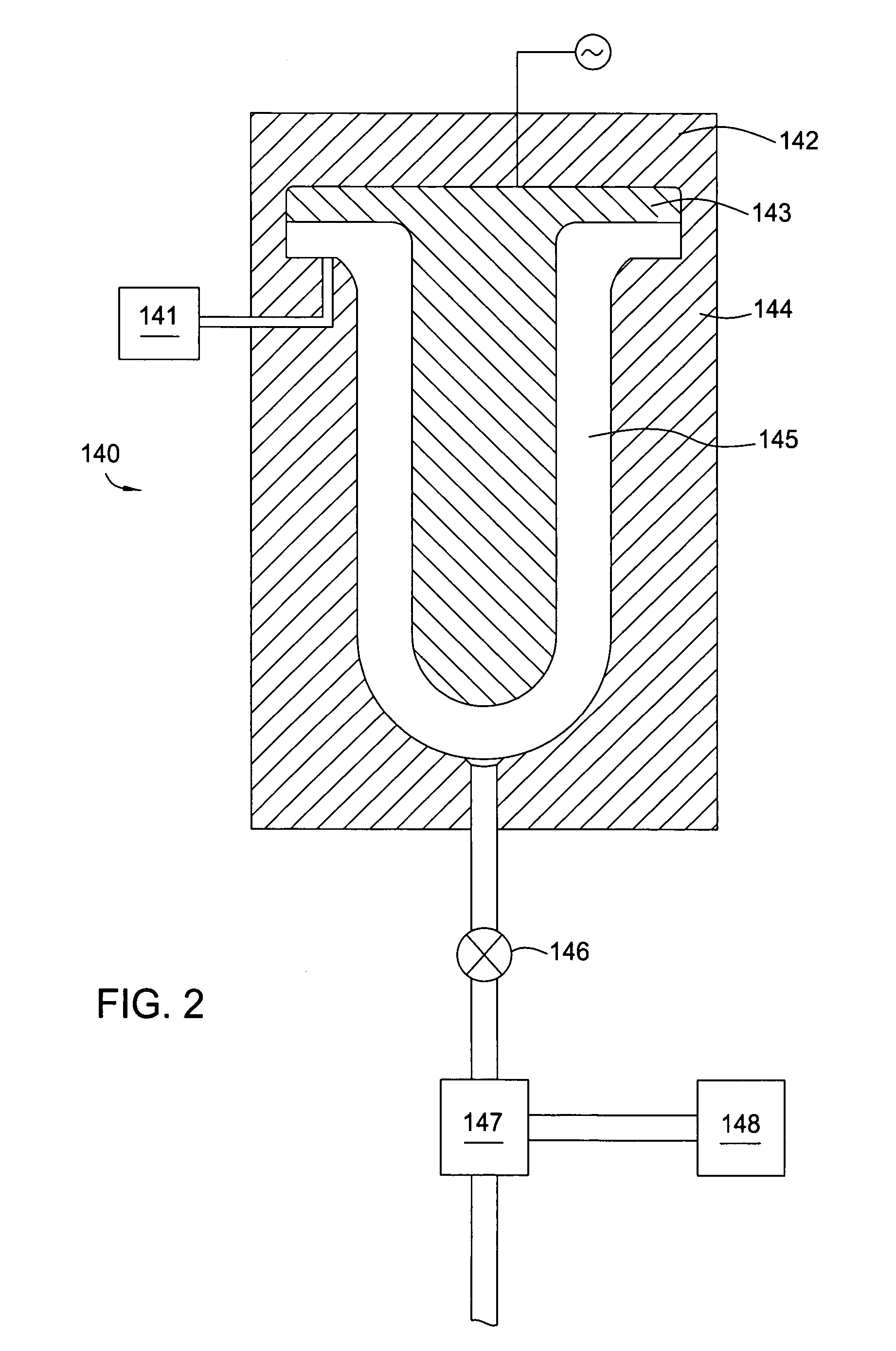Apparatus for generating plasma by RF power
- Summary
- Abstract
- Description
- Claims
- Application Information
AI Technical Summary
Problems solved by technology
Method used
Image
Examples
Embodiment Construction
[0019] A processing chamber suitable for a variety of substrate processing methods is provided. An embodiment of the chamber is particularly useful for performing a plasma assisted dry etch process that requires both heating and cooling of the substrate surface without breaking vacuum. For example, the processing chamber described herein is envisioned to be best suited for a front-end-of line (FEOL) clean chamber for removing oxides and other contaminants from a substrate surface.
[0020] A “substrate surface”, as used herein, refers to any substrate surface upon which processing is performed. For example, a substrate surface may include silicon, silicon oxide, doped silicon, germanium, gallium arsenide, glass, sapphire, and any other materials such as metals, metal nitrides, metal alloys, and other conductive materials, depending on the application. A substrate surface may also include dielectric materials such as silicon dioxide, organosilicates, and carbon doped silicon oxides. Th...
PUM
| Property | Measurement | Unit |
|---|---|---|
| Surface area | aaaaa | aaaaa |
| Frequency | aaaaa | aaaaa |
| Heat | aaaaa | aaaaa |
Abstract
Description
Claims
Application Information
 Login to View More
Login to View More - R&D
- Intellectual Property
- Life Sciences
- Materials
- Tech Scout
- Unparalleled Data Quality
- Higher Quality Content
- 60% Fewer Hallucinations
Browse by: Latest US Patents, China's latest patents, Technical Efficacy Thesaurus, Application Domain, Technology Topic, Popular Technical Reports.
© 2025 PatSnap. All rights reserved.Legal|Privacy policy|Modern Slavery Act Transparency Statement|Sitemap|About US| Contact US: help@patsnap.com



